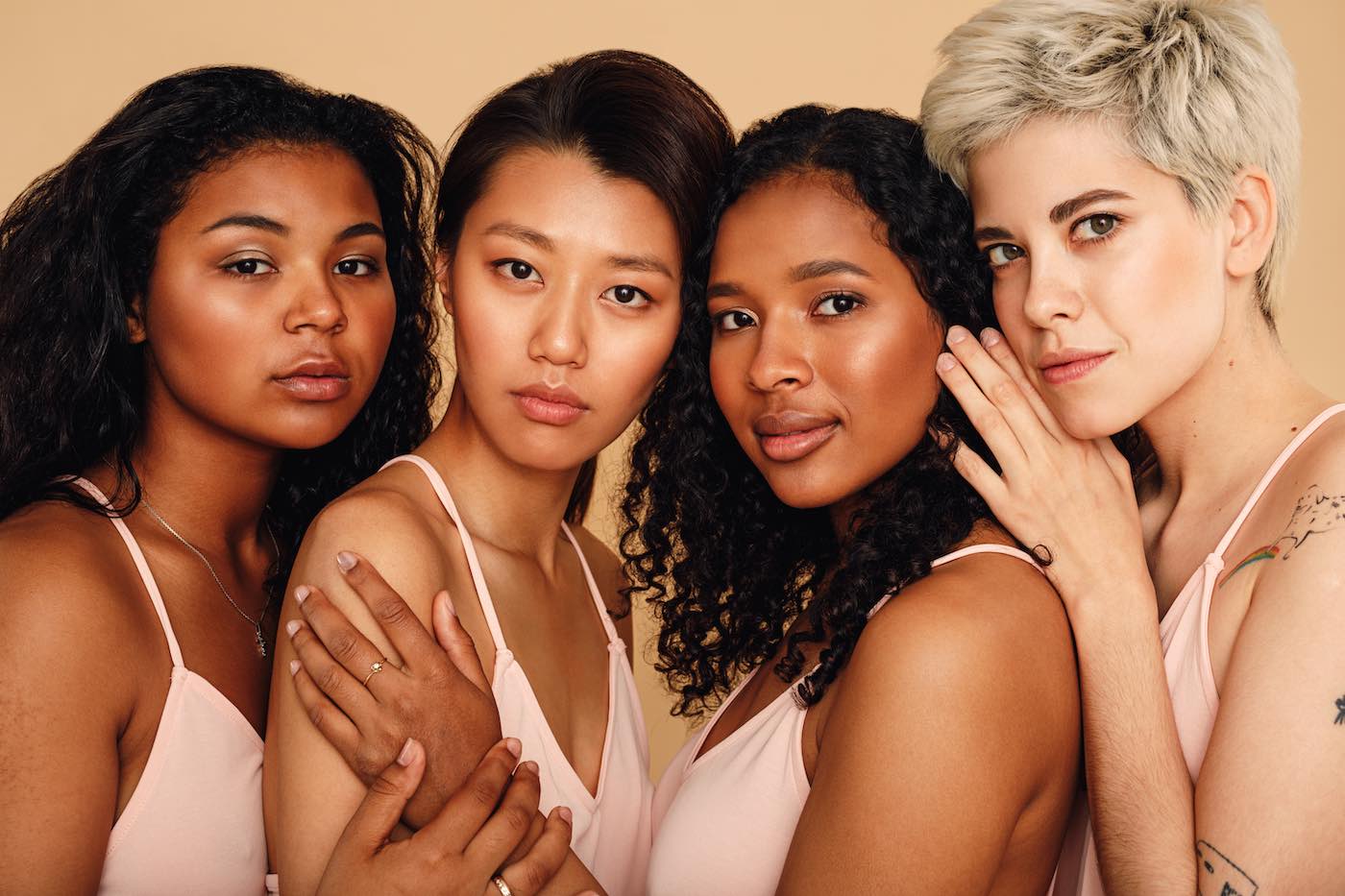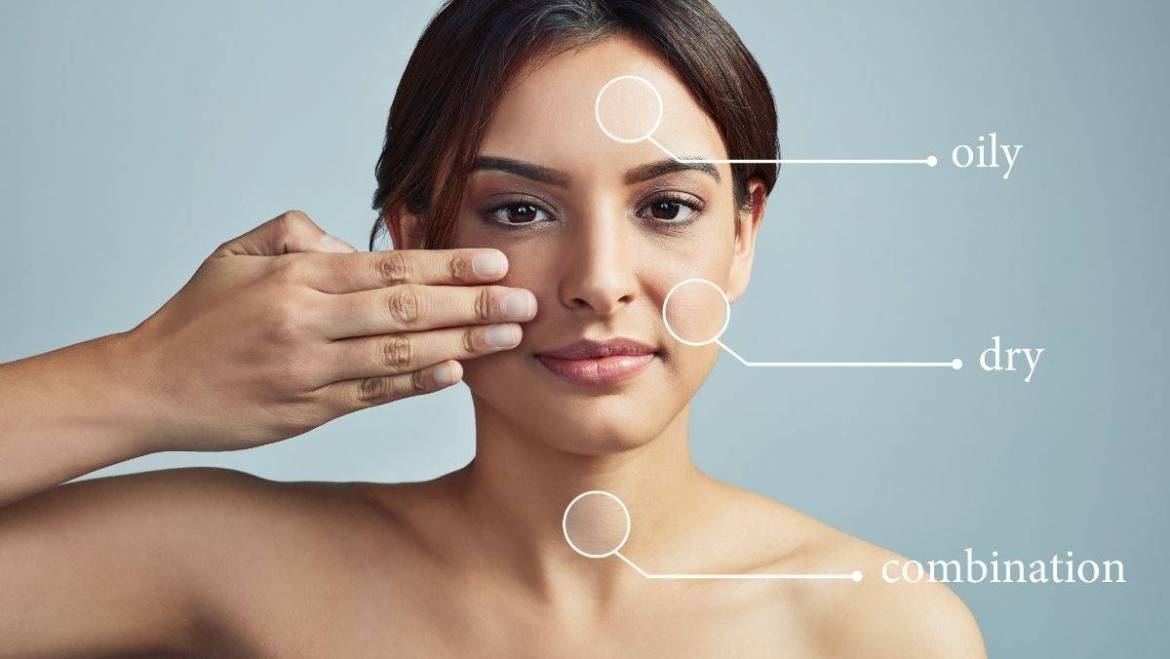
You may have heard of different types of skin, and by understanding your skin type, you can give your skin much-needed care and protection now and for years to come. If you are unsure about your skin type, keep reading this page, as it covers all the basics about recognizing your skin type below, plus tips for picking the best skin care products and treatments for each type.
Determining your skin type
When we talk about skincare, four skin types are typically categorized:
- Dry
- Oily
- Normal
- Combination
Our skin types can change as we grow. Most of us are born with normal skin, but as we age and reach puberty, our genes, hormonal changes, and certain environmental factors can bring changes in skin types.
Your skin type is based on your skin’s sebum (oil) secretion. The production of skin oil change over time and may also be affected by factors such as genetics, hormones, humidity, stress, weather, environment and the natural ageing process. Once you know what to look for, using the common characteristics below, determining your skin type can usually be recognized through simple observation. Two tests can be performed at home to help you know what type of skin you have in just thirty minutes: the blotting sheet method and the watch-and-wait method.
What is your skin type: dry, oily, or mixed; what’s the difference?
Skin is the body’s largest organ that performs various functions, from regulating your body temperature to protecting from germs. Skin’s outermost layer, the epidermis, is the skin barrier. This protective barrier is the gatekeeper between your skin and the external environment, storing water and harmful substances. Although a healthy skin barrier is important for all skin types, it is also necessary to remember that every individual’s skin is unique in many ways, which means there is no one size fits all approach to getting glowing, healthy-looking skin. However, there are numerous pinpoints to look for that can help you get the answer to the question, “What is the skin type I have”.
Here are the main indicators to remember when deciphering if your skin is predominantly dry, oily, normal, or a combination.
1. Dry skin
Dry skin generally produces less oil as compared to other skin types. This causes the skin to appear dull, rough, flaky, and even scaly. People with dry skin types often feel skin tight because of less elasticity and are noticeably dehydrated. Such type of skin is more prone to showing more visible fine lines.
Additionally, it may become itchy or irritated. A skincare routine for dry skin should include soothing and hydrating ingredients that help restore skin moisture. For dry skin types, doctor suggest to avoid excessively long and hot showers, moisturizing skin multiple times a day and opting for skin care products that are non-comedogenic and alcohol-free.
2. Oily skin
Oily skin is due to the over-production of sebum. Too much of this oily substance can bring acne and making skin to appear shiny and greasy, especially in T zone (forehead, nose and chin). People with oily skin types may be more prone to enlarged pores, blackheads and whiteheads. The ideal skin care regimen for oily people should feature a foaming cleanser that removes dirt, excess oil, and other impurities. It should also include a lightweight, oil-free moisturizer that offers oily skin the essential hydration it needs.
3. Normal skin
This is more of a balanced type of skin, neither too dry nor too oily. People with Normal skin types are usually not prone to breakouts, flakiness, or feeling greasy. Such people have small pores and smooth skin texture and are less likely to develop sensitivity or blemishes. However, even though normal skin has no specific issues or concerns, it still requires routine skin care to look and feel its best. The ideal normal skin care regimen helps maintain your skin’s hydration by locking moisture and assisting your skin’s barrier.
4. Combination skin
When discussing combination skin, an individual has at least two different facial skin types and may need to adjust their skincare habits accordingly. Combination skin includes the skin area that is dry and oily, with the T-zone commonly being oily and the cheeks area being either normal or dry. Various factors can affect this skin type, including stress and hormone fluctuation. Cleansing and hydration is the key to maintaining this skin type.
What about sensitive skin types?
Sensitive skin is dry, sensitive, oily, sensitive, or normal sensitive skin. Regardless of which kind you have, if you have sensitive skin, your skin may appear red and feel like it’s burning, dry, or itchy. These symptoms can be triggered by external irritants such as dye, fragrance, and environmental factors. People with sensitive skin should identify what triggers their sensitivity and avoid skin care products containing those specific ingredients. You should also avoid exposure to environmental triggers.
The information in this blog does not constitute medical advice and is solely available for information purposes.
Also Read: How To Choose Skincare Products?
admin
Latest posts by admin (see all)
- What is Triluma Cream? Uses, Benefits, and How It Works for Skin - December 26, 2024
- What Causes Dark Spots? Understanding the Science of Hyperpigmentation and How Skin Lightening Products Help - December 26, 2024
- Tretinoin Gel vs. Cream: Which Formulation is Right for Your Skin? - December 20, 2024



